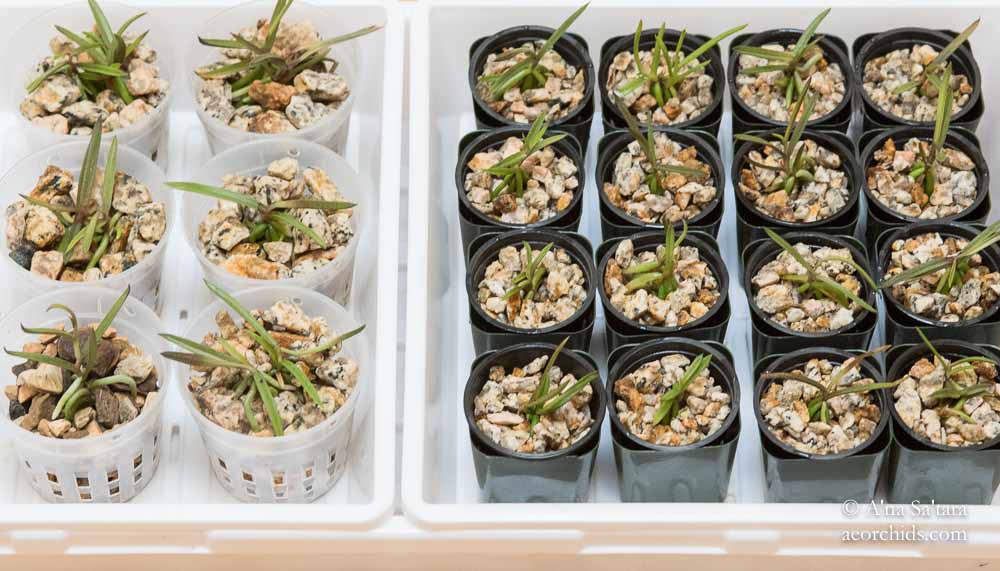A sparkling pink flower in profusion! While Sarcochilus ceciliae is known to be a sequential bloomer, this particular flowering opened the majority of its blooms at once, for a notable display on a small plant. For scale, that’s a 4″ (10cm) Vanda basket in the photograph. The crystalline quality of the flowers is very distinctive — and beautiful.





Sarcochilus ceciliae is an Australian species, found throughout New South Wales and Queensland. The flowers vary in intensity of pink coloration across its geographic range. As with many Australian orchid species, there is debate on “splitting” some of the traditional species and varieties. Sarcochilus ceciliae is a candidate for a few taxonomic divisions, particularly based upon the lip.
In its native habitat, Sarcochilus ceciliae grows as a lithophyte and is very susceptible to over-watering. Also, it is a relatively slow grower, and therefore, slow to recover from root damage (much like rupiculous Laelia). Recognizing these traits is key to successful culture. The species is reputed to be challenging to grow, and many of the problems likely come from the choice of media and/or watering frequency.
All of our plants are potted in granite or sandstone in wood baskets or plastic net pots. This enables rapid drying of the roots and airflow. Our pure (RO) water and low fertilizer culture is very amenable to inorganic media; we use granite and/or hydroton for many orchid species. Unlike many orchids, we pot Sarcochilus ceciliae with the base of the plant “perched” a bit above the surface of the media (see photo above). This promotes rapid drying of the base of the orchid.
I water Sarcochilus ceciliae 1-2 times per week. They grow in a humid cool room (50-70% humidity) with minimum winter nights of 50F (10C) and summer high temperatures in the mid 80s (28C). They prefer bright light, like other Sarcochilus. Our Sarcochilus (species and hybrids) share a shelf with seedlings of Cattleya warscewiczii, enjoying a “private fan” for high air movement over their growing area. This has been our best location thus far for growing Sarcochilus. While seemingly quite different, Sarcochilus and Cattleya warscewiczii both enjoy bright light, high humidity, and consistent air movement.
The photos below are seedlings from a flask of Sarcochilus ceciliae that we acquired in June 2020. After some deliberation, we decided to pot the seedlings as we would for a mature plant: net pots with granite. The 3″ (7.5cm) pots are filled with medium granite and are long-term pots for these plants. The 1″ (2.5cm) net pots, filled with small granite, are set inside of a 2″ (5cm) plastic pot. We intend to repot some of these seedlings into a large basket after they mature a bit.



Interested in more unique and beautiful orchid images?
My vision to create orchid portraits emerged from my appreciation for the “whole orchid.” So many photographs of orchids focus only on the flower. But orchids are not flowers: they are entire plants and living beings. Connect more deeply with the many dimensions of orchids …








